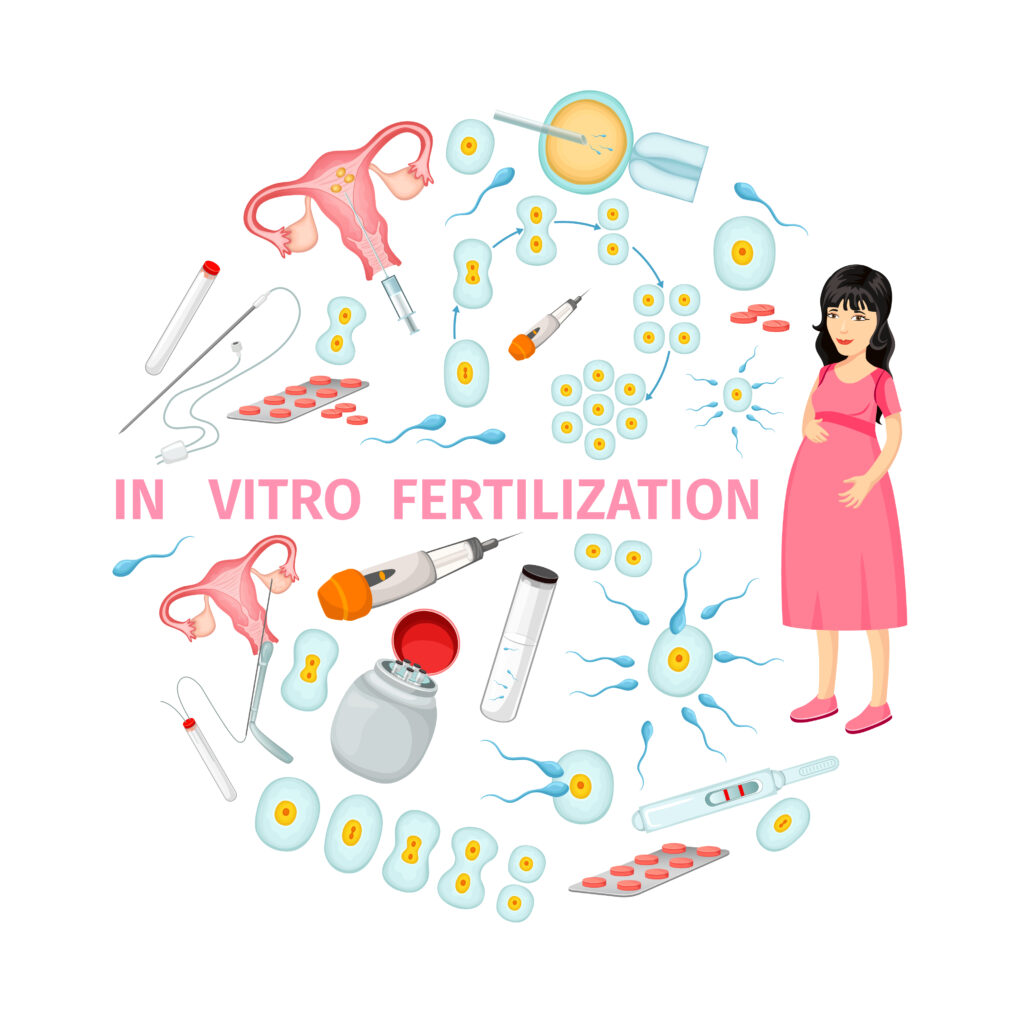Are you considering or have been adviced IVF treatment? Then are you ready to learn all about IVF? Buckle up because we’re diving into everything you need to know about this incredible fertility treatment that’s helped countless couples achieve their dream of parenthood. So without wasting your time let’s dive into this informative blog article.
What is IVF?
IVF stands for in vitro fertilization. It’s a type of assisted reproductive technology (ART) where eggs and sperm are combined outside the body in a laboratory. Once fertilized, the embryos are transferred to the uterus where they can implant and grow into a baby.
Who Can Benefit from IVF?
IVF can help couples facing various fertility challenges, including:
- Women with blocked or damaged fallopian tubes.
- Men with low sperm count or poor sperm motility.
- Couples with unexplained infertility.
- Women with ovulation disorders.
- Individuals or couples using donor eggs, sperm, or embryos.
The IVF Process: Step by Step
- Ovarian Stimulation: The first step involves stimulating the ovaries to produce multiple eggs using fertility medications. This is done to increase the chances of success during the IVF cycle.
- Egg Retrieval: After the eggs reach maturity, a minimally invasive technique known as transvaginal ultrasound aspiration is used to remove them from the ovaries. This typically takes about 20-30 minutes and is done under sedation. You do not required admission for this procedure and you will be discharged in 3-4 hours after the procedure.
- Fertilization: The retrieved eggs are then fertilized with sperm in a laboratory setting. This can be done through conventional IVF, where sperm are added to the eggs, or through Intracytoplasmic Sperm Injection (ICSI), where a single sperm is injected directly into the egg.
- Embryo Culture: The fertilized eggs, now embryos, are cultured in the lab for a few days to allow for development.
- Embryo Transfer: After a few days of culture, the healthiest embryos are selected for transfer into the uterus. This is a relatively simple procedure that does not require anesthesia.
- Waiting for Pregnancy: Following embryo transfer, there’s a waiting period of about 10-14 days to see if implantation and pregnancy occur. A pregnancy test is usually done to confirm pregnancy.
Key Benefits of IVF
- Increased Pregnancy Rates: IVF offers higher pregnancy rates compared to natural conception, especially for couples with fertility issues.
- Genetic Screening: IVF allows for preimplantation genetic testing, reducing the risk of passing on genetic disorders to the baby.
- Controlled Environment: IVF allows specialists to closely monitor the fertilization and embryo development process, optimizing the chances of success.
- Family Building Options: IVF offers various family-building options, including embryo freezing, donor egg or sperm, and gestational surrogacy.
Conclusion
IVF is a remarkable fertility treatment that has brought hope to millions of couples worldwide. While it may not be the right choice for everyone, it’s essential to understand the process and options available if you’re considering IVF to grow your family. Now, if you’re in Hyderabad and searching for the best infertility-IVF specialist, look no further than Dr. Chandini Chinta. With over 8 years of experience and a gold medal in MBBS and MS, she’s the one you want by your side on this journey. Don’t hesitate—reach out to Dr. Chandini Chinta today and take the first step towards growing your family.

